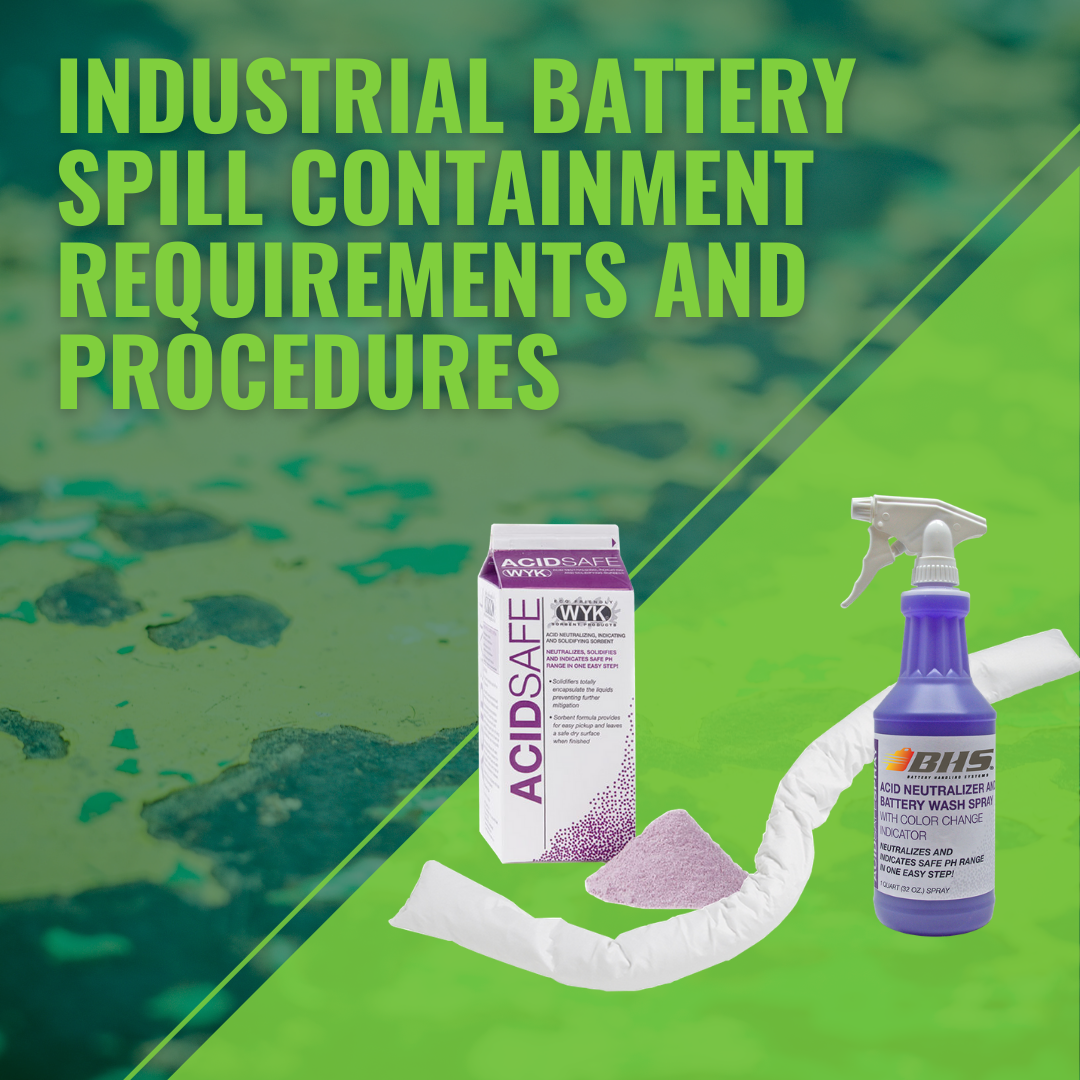We use cookies to make your experience better. To comply with the new e-Privacy directive, we need to ask for your consent to set the cookies. Learn more.
Industrial Battery Spill Containment Requirements and Procedures
Whether they power electric forklifts, back-up power systems, or utility vehicles, industrial batteries are essentially giant cases of lead, water, and sulfuric acid. It’s easy to see why battery spills can be so hazardous. Given the risk, it’s crucial for every workplace that handles these power units to understand the battery spill containment requirements outlined by the Occupational Safety and Health Administration (OSHA).

We’ve discussed safe response to battery spills in this blog in the past: Review our step-by-step cleaning process, or find out why you need much more than baking soda to safely contain electrolyte. But before you establish your procedures, start with a thorough review of the OSHA’s spill containment requirements.
Battery Spill Containment Requirements from OSHA
First off, OSHA absolutely requires workplaces in which industrial batteries are present to prepare for cleaning up electrolyte spills—regardless of the industry. One standard for construction workplaces, 29 CFR 1926.1926.441(a)(7), states that “Facilities shall be provided for flushing and neutralizing spilled electrolyte...”
The general-industry OSHA standard 1910.178(g)(2) requires all facilities that run electric forklifts to “be provided for flushing and neutralizing spilled electrolyte…” alongside other safety requirements. So far, these regulations simply state that employers must provide the products and equipment that neutralize and clean up acidic electrolyte. They don’t say exactly how.
For guidance, turn to the OSHA eTool titled “Powered Industrial Trucks (Forklift).” This page lists six required steps for responding to electrolyte spills:
- Neutralize acid content of the spill. AcidSafe Neutralizing Sorbent simultaneously absorbs and neutralizes spilled electrolyte, changing color to indicate balanced pH levels.
- Verify that the pH level is between 6 and 8. The OSHA guidance recommends testing the pH level, although, as mentioned, with a color-indicating sorbent like AcidSafe, pH verification is built into the product.
- Contain and absorb electrolyte. Not to second-guess OSHA’s recommendations, but containment should probably be the second step, just after putting on personal protective equipment (PPE), which we’ll discuss shortly. It’s important to safely contain spills as soon as possible. Place absorbent Universal Socks around the outer edges of the spill to keep it from spreading. Then apply AcidSafe granules to neutralize and soak up the remaining liquid within the socked-off area.
- Clean acidic residue off of battery connectors and cases. The OSHA recommendations call for rinsing batteries with clean water. It’s safer to begin with a neutralizing cleaner like AcidSafe Liquid Neutralizer, which balances the pH of electrolyte residue while degreasing surfaces for easy cleaning.
- Report the spill. The first priority is safety; the second is preventing damage to floors and equipment. But after responding to the spill, employees should provide detailed reports to supervisors.
- Dispose of used cleaning products in accordance with local environmental law. Contact your local Environmental Protection Agency (EPA) office or state-run regulatory agency for more information.
Before taking required action to contain a spill, however, it’s important to protect employees by providing appropriate PPE, including:
Get all of this PPE in a convenient package with the Standard Personal Protective Kit from Solus Group. And be sure to provide comprehensive, ready-to-use Spill Kits everywhere you store, charge, or change industrial batteries. These Spill Kits include everything you need to contain, neutralize, absorb, and remove electrolyte in accordance with all the battery spill containment requirements discussed above. To learn more, contact Solus Group at 314-696-0200.
